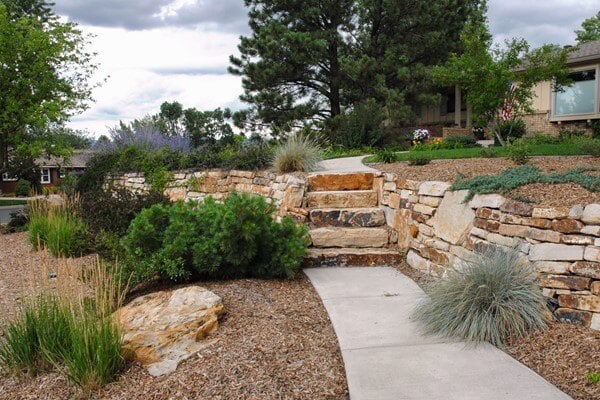Dwarf Creeping Juniper
Dwarf creeping juniper forms a compact mat of bluish green foliage with a feathery texture. The fine-needled branches grow over each other, and vary in length. The scales can have a slightly purple tinge in winter. It is a very pretty spreading juniper.
Junipers are not recommended for homes with wildfire risk.
.jpg)
.jpg)
.jpg)
.jpg)
Dwarf Creeping Juniper
Dwarf creeping juniper forms a compact mat of bluish green foliage with a feathery texture. The fine-needled branches grow over each other, and vary in length. The scales can have a slightly purple tinge in winter. It is a very pretty spreading juniper.
Junipers are not recommended for homes with wildfire risk.
Plant details
Botanic Name
Juniperus procumbens 'Nana'
Pronunciation
jew-NIP-er-us pro-KUM-benz
Mature Height
6 to 12 in.
Mature Spread
4 to 6 ft.
Water usage
One Droplet: Water twice per month or less, once established.
Two Droplets: Water about once per week, once established.
Three Droplets: Water about twice per week, once established.
Flower Color
negligible
Bloom time
inconspicuous
Colorado Native
No
Natural Habitat
species is native to China, Mongolia, and Japan
Light Requirements
sun
Cold Hardiness
USDA zones 4-9
Elevation Limit
hardy to 7,500 ft.
Performance
At the Water Wise Demonstration Garden, these junipers were slow to establish, but they matured into beautiful plants. The plants that are located in a sunnier area are larger and have a more intense color. The plants that were in a protected location are smaller and lighter in color. They've had very little trouble with spider mites.
Maintenance
Junipers require little water or fertilizer after establishment. Monthly watering during the winter can help maintain a healthy plant.
See in a landscape
With higher water using plants like Kentucky bluegrass, it's important to make sure that the ground is level where it's planted to prevent the water from running right off when watered. The stone walls in this yard help make a flat place to plant and add interest and texture to the front yard. Because this yard is so big, much of the grass was removed from where it was not useable, and shrubs and low maintenance perennials were planted instead. Wood chip mulch helps the soil from drying out in the heat of the summer and also helps to prevent weeds from growing around the plants.

.jpeg)
.jpeg)
.jpeg)
.jpeg)
.jpeg)
.jpeg)
.jpeg)
.jpeg)
.jpeg)
.jpeg)